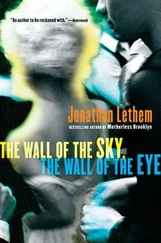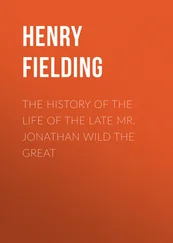The Leutnant reappeared in midafternoon. I was famished. He pointed to my kit and said, “The liaison is about to leave.” I followed him to an Opel equipped with chains and driven, strangely, by an officer. “Good luck,” the Leutnant said, saluting me.—“Happy Christmas,” I replied. Five of us had to pile into the car; with our coats, there was hardly any room and I felt as if I were suffocating. I leaned my head against the cold window and breathed onto it to defrost it. The car started up and left, jolting. The road, marked out by tactical signs nailed to posts, boards, and even to frozen horse legs, planted in the snow hoof-up, was slippery, and despite its chains, the Opel often skidded sideways; most of the time, the officer righted it adroitly, but sometimes it got buried in the snowdrifts and then we had to get out and push to free it. Pitomnik, I knew, was near the center of the Kessel , but the liaison wasn’t going directly to Stalingrad; it followed a capricious route, stopping off at various command posts; each time, officers got out of the car and others took their places; the wind had risen and it was becoming a snowstorm: we advanced slowly, as if we were feeling our way along. Finally the first ruins appeared, some brick chimneys, stumps of walls standing along the road. Between two blasts of wind I glimpsed a sign: ENTER STALINGRAD AT THE RISK OF DEATH. I turned to my neighbor: “Is that a joke?” He looked at me dully: “No. Why?” The road was descending a kind of cliff, snaking back and forth; at the bottom, the ruins of the city began: huge shattered buildings, burned, with gaping, blind windows. The roadway was strewn with debris, sometimes hastily cleared away so vehicles could thread their way through. The bomb craters hidden by the snow inflicted brutal jolts on the shock absorbers. On all sides flowed a chaos of wrecked cars, trucks, tanks, German and Russian intermingled, sometimes even embedded in each other. Here and there we passed a patrol or, to my surprise, civilians in rags, women especially, carrying buckets or bags. With a clanking of chains, the Opel crossed a long bridge repaired with prefabricated sections, over a railroad: below, hundreds of motionless train cars stretched out, covered with snow, intact or mangled by explosions. After the silence of the steppe, pierced only by the noise of the engine, the chains, and the wind, a constant racket reigned here, detonations more or less muffled, the abrupt barking of the PAKs, the crackle of machine guns. After the bridge, the car turned left, following the railroad and the abandoned freight trains. To our right a long bare park, completely treeless, emerged; beyond, more ruined buildings, dark, silent, their façades collapsed into the street, or else raised up against the sky like a stage set. The road skirted round the train station, a large building from the czarist era, once probably yellow and white; on the square, in front, a confusion of burned vehicles, torn to pieces by direct impacts, lay piled up, their twisted forms scarcely softened by the snow. The car set out on a long diagonal avenue: the noise of the gunfire intensified; in front, I could see puffs of black smoke but didn’t have the slightest idea where the front line could be. The avenue emerged onto an immense empty square, full of debris, surrounding a kind of park marked out by streetlights. The officer parked the car in front of a large building: at its corner, a peristyle in a half-circle with its columns riddled by gunfire, surmounted by large bay windows, empty and black; at the top, a flag with a swastika hung limply on a pole. “You’re here,” he said to me, lighting a cigarette. I extracted myself from the car, opened the trunk, and got out my kit. Some soldiers armed with submachine guns were standing under the peristyle but didn’t come forward. As soon as I closed the trunk, the Opel started up again, executed a rapid U-turn, and headed back up the avenue toward the train station, in a noisy clang of chains. I looked at the desolate square: in the center, a circle of children made of stone or plaster, probably the remnants of a fountain, seemed to be mocking the ruins all around. When I went toward the peristyle, the soldiers saluted me but barred my way; I saw with surprise that they were all wearing the white armband of the Hiwis. One of them asked me in bad German for my papers, and I held out my paybook. He examined it, returned it to me with a salute, and gave a brief order, in Ukrainian, to one of his comrades. He signed for me to follow. I climbed the steps between the columns, broken glass and stucco crackling beneath my boots, and entered the dark building through a wide opening without any doors. Just beyond stood a row of pink plastic mannequins dressed in varied attire: women’s dresses, blue work clothes, twill suits; the figures, some of their skulls smashed by bullets, were still smiling inanely, their hands raised or pointing in childish, unformed gestures. Behind them, in the darkness, stood shelves still full of household objects, shattered or overturned glass cases, counters covered with plaster and debris, display shelves of polka-dot dresses or bras. I followed the young Ukrainian through the aisles of this phantom store to a stairway guarded by two other Hiwis; on an order from my escort, they stood aside to let me pass. He led me down to a basement lit by the yellow, diffuse light of weak bulbs: hallways, rooms swarming with Wehrmacht officers and soldiers dressed in the most disparate uniforms, regulation coats, padded gray jackets, Russian greatcoats with German insignias. The farther in we went, the hotter, damper, heavier the air became; I was sweating profusely under my coat. We went down even more stairs, then crossed a large, high-ceilinged operations room lit by a chandelier overloaded with glass, with Louis XVI furniture and crystal glasses scattered among the maps and files; a crackling Mozart aria was emanating from a portable gramophone set on top of two crates of French wine. The officers were working in slippers, wearing casual slacks and even shorts; no one paid any attention to me. Beyond the room was another hallway, and I finally saw someone in an SS uniform: the Ukrainian left me there and the Untersturmführer led me to Möritz.
The Feldpolizeikommissar, a stocky bulldog with wire-rimmed glasses, wearing nothing more than a pair of pants with suspenders and a stained undershirt, welcomed me rather dryly: “It’s about time. I’ve been requesting someone for three weeks now. Ah well, Heil Hitler.” A heavy silver ring gleamed on his hand stretched almost to the level of the lightbulb hanging over his massive head. I recognized him vaguely: in Kiev, the Kommando worked closely with the Secret Feldpolizei; I must have crossed him in a hallway. “I received the assignment order just four days ago, Herr Kommissar. I couldn’t come any faster.”—“I’m not blaming you. It’s those damn bureaucrats. Have a seat.” I took off my shuba and my shapka, put them on my kit, and looked for a seat in the cluttered office. “As you know, I’m not an SS officer, and my group of the Geheime Feldpolizei is under the control of the AOK. But as a Kriminalrat of the Kripo, all branches of the police in the Kessel are under my command. It’s a rather delicate arrangement, but we understand each other. The Feldgendarmen take care of the executive tasks, or else my Ukrainians do it. I used to have eight hundred in all, but there’ve been some losses. They’re divided up between the two Kommandanturen, this one and another one south of the Tsaritsa. You are the only SD officer in the Kessel , so your jobs will be pretty varied. My Leiter IV will explain it all to you in detail. He’ll also take care of your logistics problems. He’s an SS-Sturmbannführer, so unless there’s an emergency, you’ll report to him and he’ll summarize it for me. Good luck.”
Читать дальше










